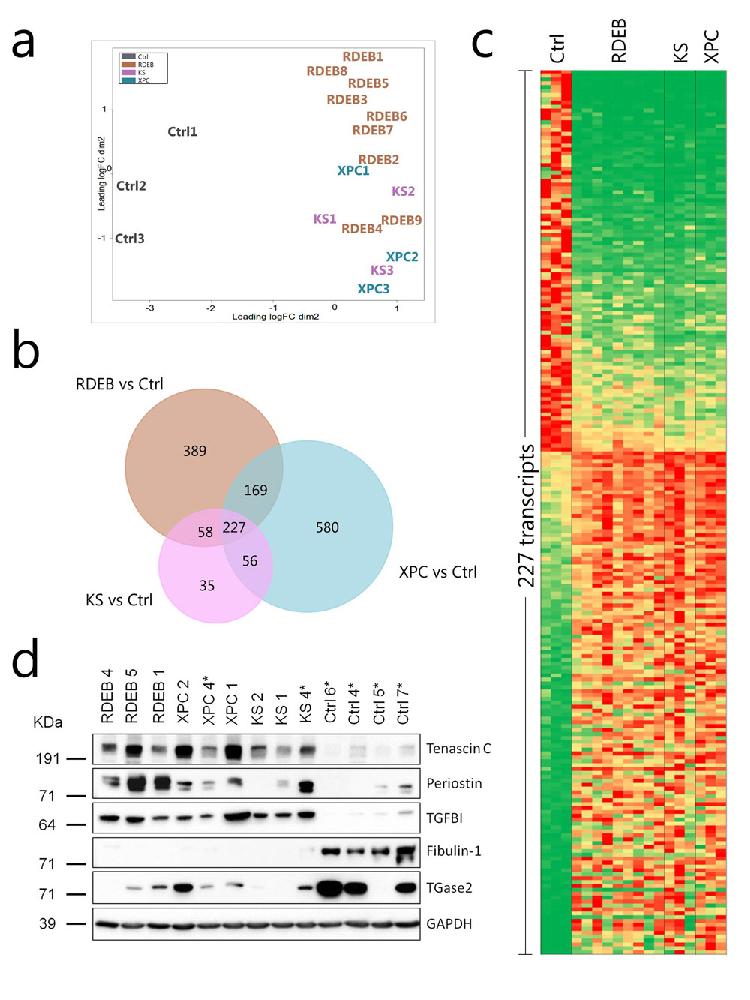A common genetic signature has been discovered among three rare skin diseases
Research lead by a lecturer at the UC3M
2/28/19
A group of researchers lead by a lecturer from the Universidad Carlos III de Madrid (UC3M), Marcela del Río, from the CIEMAT, the Rare Diseases Networking Biomedical Research Centre (Initials in Spanish: CIBERER-- ISCIII) and Fundación Jiménez Díaz has identified a common genetic signature among three rare skin diseases or genodermatoses: recessive dystrophic epidermolysis bullosa, Kindler syndrome and xeroderma pigmentosum. In the near future, these findings will allow efficient and safe evidence-based therapeutic approaches.

Gene expression signature in fibroblasts from RDEB, KS and XPC patients, compared to healthy donors (a). An alteration common to the three diseases of 227 genes was identified (b; c), particularly showing those associated with changes in the extracellular matrix (d).
Through a global gene expression analysis (transcriptomic), the researchers were able to find and confirm a genetic signature common to these genodermatoses in patients’ cells. The profile targets cellular activation and alteration of the dermal microenvironment (lower layer of the skin) which could favour the progression of the disease, as well as skin cancer.
Recessive dystrophic epidermolisis bullosa and the Kindler syndrome are diseases that cause fragility of the skin, caused by mutations in essential genes to attach the two layers of the skin. Patients with these diseases suffer from chronic erosion and wounds on the skin and mucosa, which causes terrible scarring and metastatic squamous cell carcinoma to develop. On the other hand, xeroderma pigmentosum is a disease characterised by high sensitivity to ultraviolet light, due to a deficiency in the DNA repair mechanisms, meaning patients are 110,000 times more likely to develop skin cancer.
This study, recently published in the British Journal of Dermatology, sheds light on the underlying molecular mechanisms of the diseases and presents new pharmacological targets that are useful for the treatment of associated effects. This possibility of treating patients therapeutically (for example, with drug repositioning) is a clinical priority in order to improve their quality of life.
As well as the aforementioned entities, researchers from the U726 of the Rare Diseases Networking Biomedical Research Centre (Initials in Spanish: CIBERER) lead by Doctor Susana Puig at the Hospital Clínic of Barcelona, Dr. Raú de Lucas at the Hospital La Paz of Madrid, Hospital Sant Pau of Barcelona and the Príncipe Felipe Research Centre of Valencia, in collaboration with Doctor Joaquín Dopazo’s team from Hospital Virgen del Rocío of Sevilla (also from CIBERER).